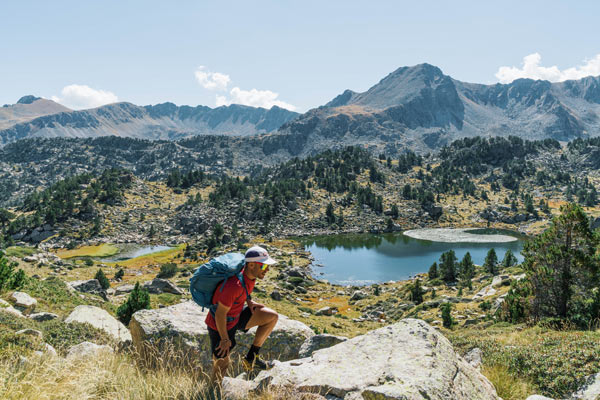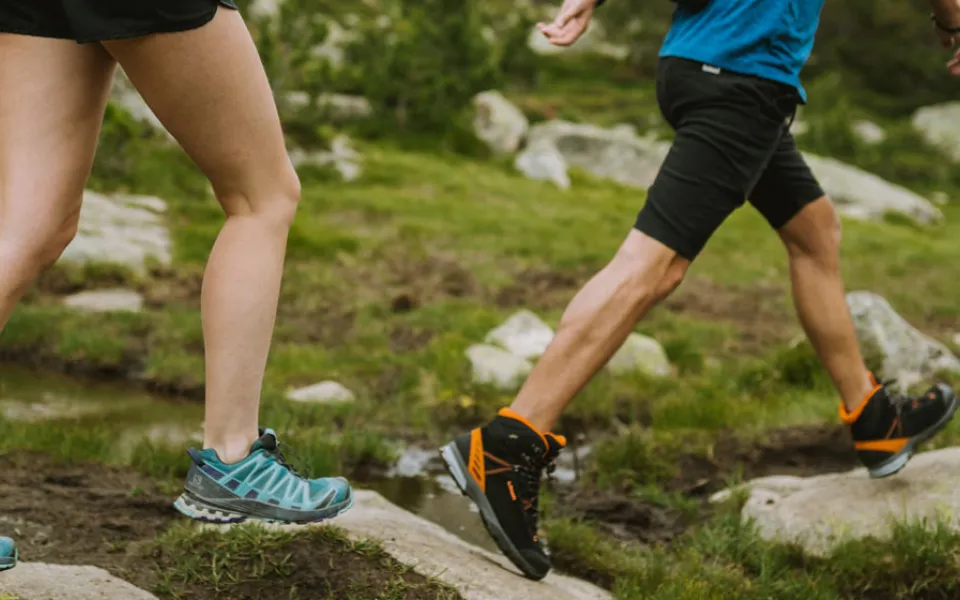 Hiking is one of the most popular outdoor activities in Andorra, in large part because of how easy and how cheap it is. That said, it is still important to ensure you invest in and bring the right clothing and equipment with you, to make the Andorra hiking experience as safe and as comfortable as possible. In this guide to what to wear for hiking in Andorra, we’ll outline all you need to know.
Hiking is one of the most popular outdoor activities in Andorra, in large part because of how easy and how cheap it is. That said, it is still important to ensure you invest in and bring the right clothing and equipment with you, to make the Andorra hiking experience as safe and as comfortable as possible. In this guide to what to wear for hiking in Andorra, we’ll outline all you need to know.
What to wear for hiking in summer
Let’s start with what to wear for hiking in the summer, looking through the key pieces of clothing to put on and then the additional gear to bring with you for a hike on a summer’s day.
Essential clothing items for your summer hiking kit
Shirts: Short sleeves, long sleeves or both?
When the sun is out in the city, it’s the optimal weather for short sleeves. So, the same must be true for a summer hike, right? Well, not necessarily. Many hikers would pick longer sleeves for what to wear for hiking in the summer, and they’d make this choice for two reasons. Firstly, long sleeves will protect your arms from the risk of sunburn. Secondly, certain long sleeve hiking shirts can keep you cool if they are a light colour and a loose material.
Bottoms: Shorts, pants or convertible options?
As for bottoms, the same logic as above applies. Shorts are great, but on a sunny and hot summer’s day they do bring the risk of sunburn and exposing your legs to the heat. One option, if you don’t want to wear long trousers the whole day, is a convertible pair of bottoms, which allow you to zip off the lower half when the conditions are right.
Headwear: Hats, bandanas and buffs
Moving on to the matter of what to wear for hiking in the summer on your head, it truly is a matter of what to wear rather than if you should wear something on your head. If you’re out in the open with the sun high above you, it’s the top of your head that is the first point of contact with the sun’s rays and that requires protection. Ultimately, headwear choices depend on individual preferences and comfort, but a hat with a full brim offers more protection than a cap, bandana or buff.
Footwear: Hiking boots, shoes or sandals?
Footwear for a summer’s hike is another interesting question which requires some nuance. Are you going for a hike for a few hours on one day of your holiday? Or, are you going on a multi-day trek? If it’s the former, some comfortable and light running shoes might be sufficient. Otherwise, if you’re going to be covering a lot of ground, you’ll want to go for full-on hiking boots.
Additional gear to consider for hot weather hikes
Hydration packs and water bottles
It goes without saying that you need to stay hydrated while hiking, especially on a summer’s day. Therefore, you’ll want to at least have a water bottle with you and it’s recommended that you research the potable water situation before you set off on your hike.
Sunglasses and sunscreen
Your hat will help protect you from the sun to some extent, but it can’t do the job alone. Sunscreen is a must for a summer’s hike, and sunglasses can protect your eyes and make for a more enjoyable experience.
First-aid kit essentials
No matter the weather, a first-aid kit is another vital part of your hiking checklist. In it, you’ll want to include items such as bandages, safety pins, gauze pads, tape, tweezers, painkillers and any other medicines you think you’ll need.
What to wear for hiking in winter
Switching to winter and to equipment for cold weather hiking or clothes for skiing, a lot of the items and pieces will be the same as what was outlined for summer. But, there are a few key differences, so let’s explore them, starting off with a detailed look at what to wear when hiking in the winter and then a discussion of footwear for a winter’s hike.
Essential clothing items for winter hiking
Head and face protection: Hats, balaclavas and neck gaiters
During a hike in wintery conditions, it’s important to protect your face and your head, although for very different reasons than on a summer’s hike. Rather than protecting against sunburn, in the winter months you’ll be looking to keep out the cold. A warm hat can do the trick and a balaclava or neck gaiter is useful too, with it recommended that you avoid cotton, as this material isn’t waterproof and isn’t breathable.
Upper body: Jackets, sweaters and vests
A for what to wear when hiking in the winter on your upper body, you should have multiple layers, perhaps starting with a vest, and ensure that the outer layer is waterproof. So, if you’re wearing a fleece which isn’t waterproof, that’s fine, but always ensure there is a waterproof later above it.
Lower body: Pants, tights and gaiters
As for the lower body, the same logic applies. Layer up, but ensure the outer later is waterproof. This is especially important for pants, considering that the bottom part is most likely to be in contact with the wet ground.
Hands and feet: Gloves, mittens and socks
On a truly cold day, it’s absolutely essential that your fingers and toes are well wrapped up and protected. Quality hiking socks and gloves can achieve this, while you should always keep in mind the importance of keeping those socks and gloves dry.
Choosing the right footwear for winter trails
Hiking boots vs snow boots: Which to choose?
It may seem obvious, but the answer to the question of whether you should opt for hiking boots or snow boots will depend on the kind of terrain you expect to cover. If you are hiking in the winter but don’t expect a lot of snow, hiking boots might be perfectly suitable. In any case, some good advice when it comes to what to wear when hiking in the winter on your feet is to ensure you try on and break in the boots before you leave.
Traction devices: Microspikes and crampons
Related to the above is the issue of microspikes and crampons, which are traction devices designed to give your boots even more grip in the snowiest and iciest conditions. If you expect you’ll be in that kind of terrain, it’s worth investigating microspikes and crampons. If not, then regular hiking boots should do the job.
Keeping your feet warm and dry
Let’s finish this guide about what to wear for hiking with three tips for keeping your feet warm and dry. Firstly, wear thick and warm socks as the base layer. Secondly, ensure your boots are fully waterproof. Thirdly, consider gaiters to offer some added protection around your ankles, keeping the cold moisture locked out.
